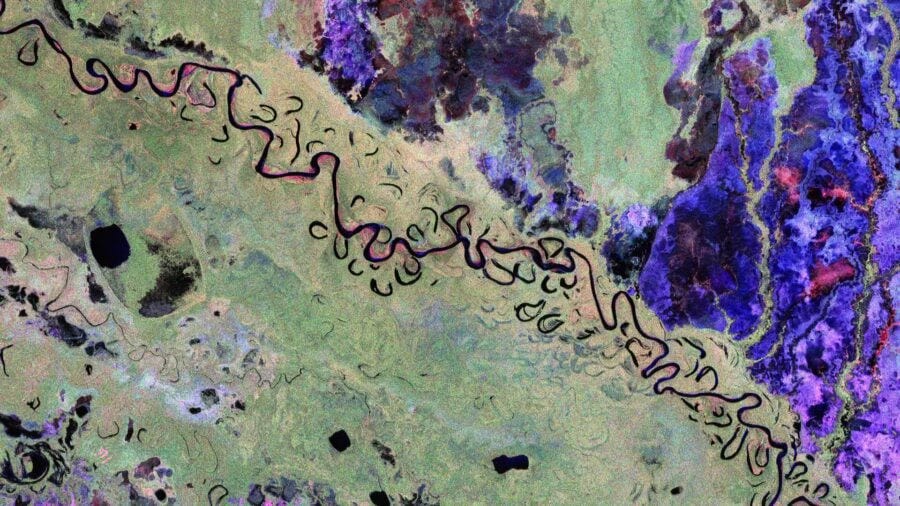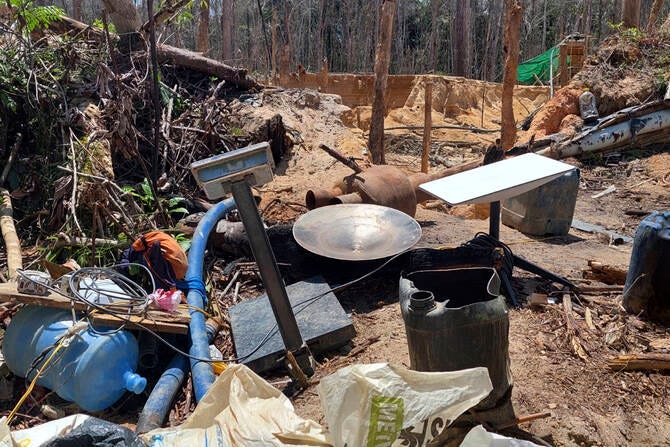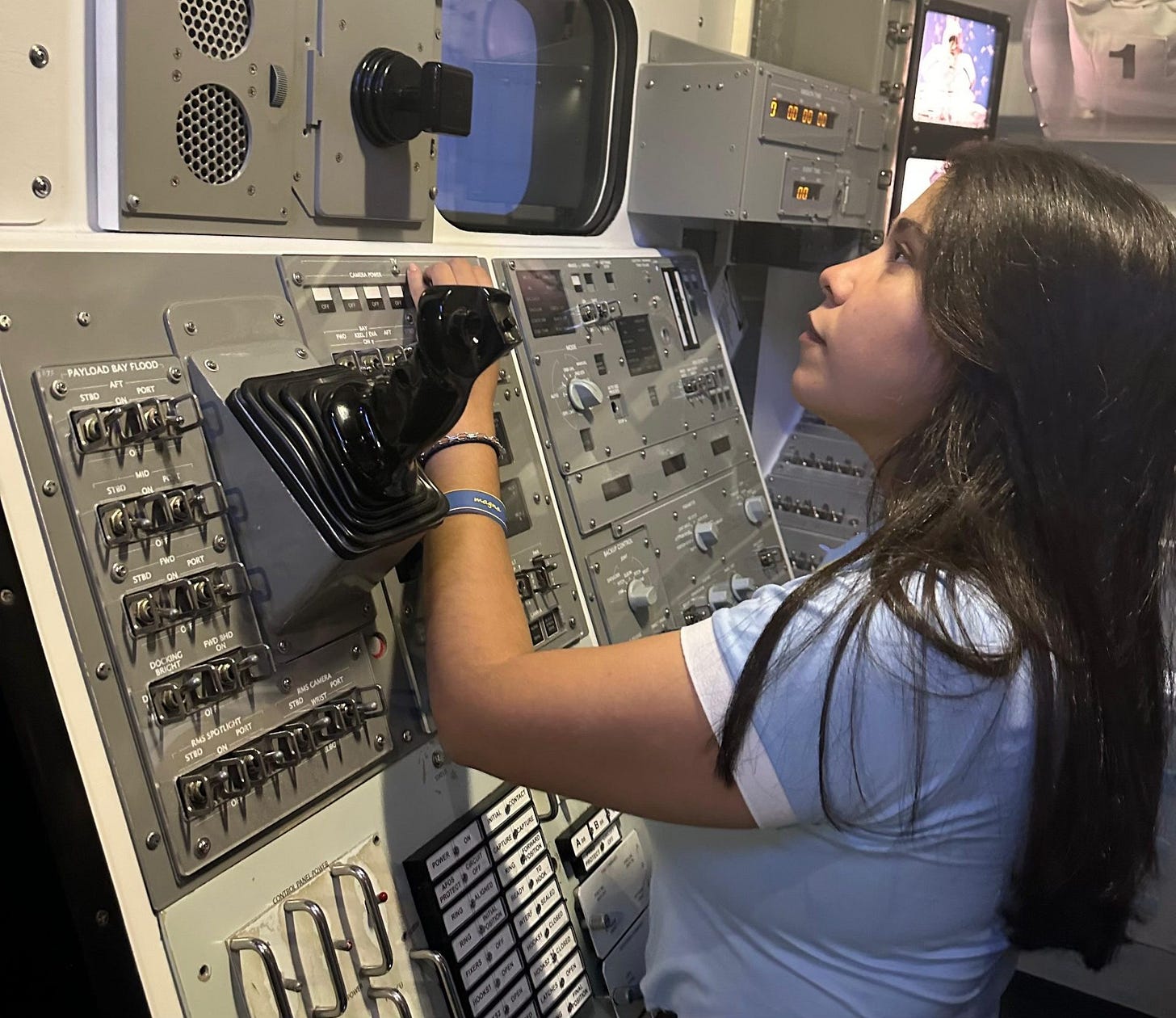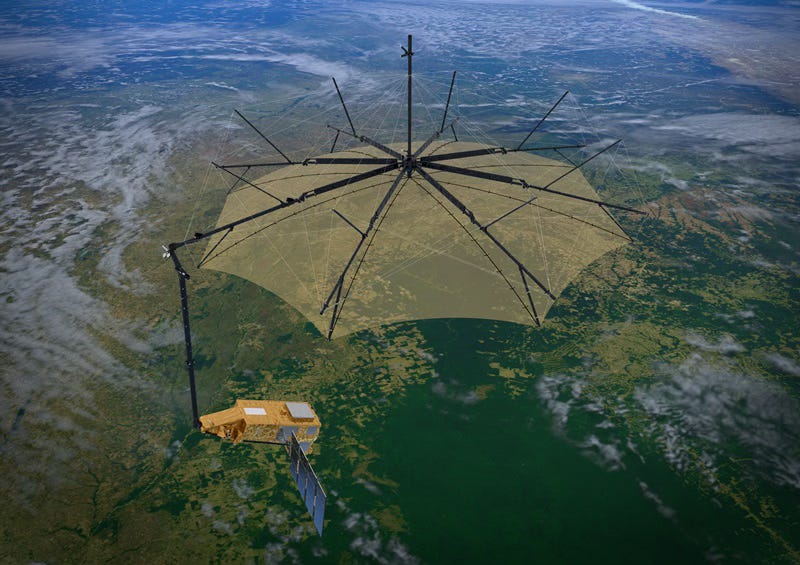Latin America Space Roundup: 20 June to 3 July 2025
A summary of all the space news in Latin America over the past two weeks, brought to you by AzurX

The following are the major space developments in the Latin American region tracked by Latin America Space Monitor over the past two weeks:
Argentina Space Developments
India and Argentina to Deepen Space Ties in Upcoming State Visit to Buenos Aires
Prime Minister Narendra Modi’s upcoming bilateral visit to Argentina on 4 to 5 July 2025 marks a strategic deepening of India–Argentina relations, with discussions expected to cover defense, energy, critical minerals, and importantly, space and science cooperation. Both countries are exploring expanded collaboration in space technology, nuclear research, and university-based STI partnerships. This reflects India’s broader pivot towards Latin America amid China’s growing presence, with space and satellite cooperation emerging as new pillars in the evolving Indo-Argentine strategic and technological agenda.

Argentina-Founded Satellogic Providing Satellite Imagery of Iran’s Nuclear Facilities
Earth observation satellite manufacturer and imagery company Satellogic, founded in Argentina and operating a manufacturing facility in Uruguay, has emerged as a key provider of high-resolution satellite imagery for defense, intelligence, and commercial users, with its 20-strong small satellite constellation offering near-daily monitoring of sensitive sites like Iran’s Natanz and Fordow nuclear facilities. Following recent U.S. airstrikes, Satellogic’s before-and-after images revealed visible crater impacts, underscoring the strategic utility of its 60cm-resolution satellites. The company, which has launched over 50 small satellites to date, sells both imagery and turnkey satellite manufacturing solutions, with a growing defense customer base alongside clients in agriculture, energy, media, and disaster response. Its future roadmap includes onboard AI-driven image processing and expanded satellite deployments to meet global demand for rapid, affordable Earth observation.
Satellogic Partners With Maxar to Provide Satellite Data to U.S. National Geospatial-Intelligence Agency
Maxar Intelligence has been awarded Delivery Order 01 under the U.S. National Geospatial-Intelligence Agency’s (NGA) Luno A program to provide AI/ML-driven automated object detection services for aircraft, ships, vehicles, and railcars across multiple global sites. The project supports NGA’s large-scale geospatial intelligence needs for persistent site monitoring and trend analysis. Crucially, Maxar is partnering with Satellogic, founded in Argentina and which operates a satellite manufacturing facility in Uruguay, leveraging Satellogic’s satellite Earth observation data to enhance object classification and anomaly detection, marking Satellogic’s growing role in U.S. defense and intelligence-focused commercial analytics programs.
Brazil Space News

India and Brazil to Expand Space and Satellite Cooperation in Upcoming Modi Visit
Prime Minister Narendra Modi’s upcoming state visit to Brazil on 5 to 8 July 2025, following the BRICS Summit, will emphasize expanding India–Brazil cooperation in space exploration, satellite technology, and aerospace, alongside defense, energy, and trade. Both governments aim to deepen institutional linkages in emerging technologies, with space identified as a key area for joint initiatives. Brazil’s Embraer has established a new subsidiary in New Delhi, strengthening aerospace ties, while Bharat Electronics plans a regional office in Rio. These moves reflect a growing India–Brazil strategic alignment with space and defense technology at its core.
Brazil Strikes Deal With SpaceX to Prevent Illegal Use of Starlink
Brazil’s Federal Prosecutor’s Office has secured a landmark agreement with SpaceX’s Starlink to curb the use of its satellite internet services by illegal mining operations in the Amazon. Under the two-year renewable deal, Starlink will require ID and proof of residence from new users in the region starting January 2026, provide user and geolocation data to authorities, and block services linked to criminal activity. The move follows mounting concerns over how Starlink’s high-speed, mobile connectivity has enabled real-time coordination of illegal gold mining and logging activities, threatening Indigenous communities and law enforcement operations.

Brazil-China BINGO Radio Telescope Nears Completion, Operational in 2026
The China-Brazil BINGO project, nearing completion in Brazil’s Paraíba state, represents one of Latin America’s most ambitious space science collaborations, focused on studying dark energy through baryon acoustic oscillations. Featuring an Olympic pool-sized radio telescope shipped from China, the project aims to deliver groundbreaking insights into the universe’s large-scale structure while demonstrating the strategic potential of Sino-Brazilian cooperation in space and astrophysics. Once operational in 2026, BINGO will significantly enhance regional scientific infrastructure and contribute to global cosmological research.
Brazil’s Airspace Used to Test Startical’s IOD- & -2 Air Traffic Management Satellites
Startical, a Spanish aerospace venture by ENAIRE and Indra, has launched its second satellite, IOD-2, as part of its mission to build a 200-satellite LEO constellation providing real-time VHF voice and data communications for air traffic management (ATM). Following the historic success of IOD-1, the IOD-2 mission will continue critical testing over the South Atlantic, including airspace managed by Brazil, to validate satellite-based aeronautical communications and surveillance. These tests, supported under the EU’s ECHOES project, aim to improve flight safety and environmental efficiency in regions like Brazil where traditional ATM infrastructure is limited.
Brazil’s Globalsat Participates in UAE’s Middle East Rail Exhibition Offering Rail SATCOM
Globalsat Brazil and Globalsat Group leadership participated in Middle East Rail 2025 in Dubai, UAE, to showcase their satellite, hybrid, and Direct-to-Device (D2D) connectivity solutions for critical logistics, remote transportation, and rail operational continuity. With a proven track record in major rail satellite communication projects across the Americas, such as Rumo and VLI, Globalsat used the event to strengthen ties with governments, network operators, and technology providers, positioning its satellite-enabled services as essential for digitalizing railways and supporting resilient transport infrastructure across global markets.

Brazil and Qatar Sign MoU to Cooperate on Radio & Satellite Spectrum Management
Qatar’s Communications Regulatory Authority (CRA) and Brazil’s National Telecommunications Agency (ANATEL) have signed an MoU to strengthen cooperation in radio spectrum management, with a focus on satellite-based monitoring and ICT development. Signed during the ITU Council 2025 meetings in Geneva, Switzerland, the agreement covers joint spectrum monitoring, training, and collaboration at international spectrum management forums. The partnership aims to enhance regulatory coordination, support human resource development, and foster innovation in response to evolving global telecommunications and satellite communication needs.
Chile Space Developments
Chile-Based Vera C. Rubin Observatory Releases First Images of Deep Space
From its high-altitude site atop Cerro Pachón in Chile, the Vera C. Rubin Observatory has released its first images as it begins the decade-long Legacy Survey of Space and Time (LSST)—the most ambitious astronomical survey ever conducted. Operating the world’s largest digital camera, Rubin will map the southern sky every three nights, capturing unprecedented data on 20 billion galaxies, dark matter, dark energy, supernovae, and near-Earth objects (see video above). This transformative Chilean-based observatory positions the country at the forefront of global astrophysics, enabling real-time observation of dynamic cosmic phenomena and reinforcing Chile’s strategic role in the future of space science.
Colombia Space News
Colombia’s Navy Seizes Cartel’s Unmanned Submarine That Used Starlink
Colombia’s navy has seized its first unmanned narco-submarine equipped with a Starlink antenna, marking a new frontier in drug trafficking technology. Discovered off the Caribbean coast and linked to the Gulf Clan cartel, the vessel—though empty—was likely a test run for remote-controlled cocaine transport. The use of Starlink satellite connectivity enables real-time, long-range navigation without onboard crew, reducing operational risks and evading detection. This follows a similar November 2024 seizure by authorities in India involving a Starlink-controlled vessel carrying $4.25 billion worth of meth, underscoring the growing integration of advanced satellite communications into maritime narcotics logistics.
Dominican Republic Space Developments
Dominican Republic Signs Up to Hispasat’s Regional SATCOM Project
The Dominican Republic has signed a landmark agreement with Spain’s Ministry of Economy and satellite operator Hispasat to join a regional shared satellite infrastructure project aimed at expanding sovereign digital connectivity across Latin America and the Caribbean. Backed by the EU’s Global Gateway program, the initiative will provide participating countries—including Colombia, Brazil, Guatemala, Costa Rica, Paraguay, and CARICOM—with dedicated satellite capacity and ground infrastructure to improve internet access in underserved areas and enable independent management of digital public services. The project strengthens Spain’s commercial footprint in the region while advancing digital inclusion and resilience through satellite telecommunications.
First Dominican Analog Astronaut, Alba Carolina Vásquez, Joins Brazil’s Habitat Mars Mission
Dominican pilot-in-training and science advocate Alba Carolina Vásquez will become the first Dominican to participate in an analog space mission at Brazil’s Habitat Mars from 7 to 11 July 2025. Supported by the Dominican Ministry of Youth and the Dominican Astronomical Society, Alba will join an international crew in a five-day Mars and Moon simulation, undertaking scientific experiments, EVAs, and emergency drills under extreme conditions. This milestone highlights growing Latin American engagement in space research and analog astronaut training, with Habitat Mars serving as the Southern Hemisphere’s first dedicated space simulation facility focused on sustainability and human resilience in off-world environments.
French Guiana Space News
Four Airbus CO3D Optical Satellites Shipped to French Guiana for July 2025 Launch
Four Airbus-built CO3D optical satellites, developed in partnership with CNES, have departed Toulouse for launch from French Guiana’s European Spaceport in Kourou aboard a Vega-C rocket on 25 July 2025. This marks a major milestone for French Guiana’s role as a launch hub for dual-use Earth observation missions. Once deployed into heliosynchronous orbit, the satellites will deliver 50 cm-resolution stereo and 2D imagery for both defense and civil users, including CNES’s global 3D mapping program. The mission will also demonstrate new technologies, including onboard AI processing, low-light imaging, and an optical laser communication link with a CNES-operated ground station in French Guiana.
France’s Latitude Commits €8 Million to Zephyr Launch Complex in French Guiana
French launch services provider Latitude has confirmed it will conduct the inaugural flight of its Zephyr small launch vehicle from the Guiana Space Centre in French Guiana, committing €8 million toward developing its dedicated section within the new CNES-led ELM-Diamant commercial launch complex. Part of France’s €50 million France 2030 space infrastructure program, the site aims to host up to 40 launches annually from multiple providers. Latitude’s 19-meter, two-stage Zephyr rocket—designed for payloads up to 200 kg to low Earth orbit—is scheduled for its first flight in 2026, reinforcing French Guiana’s growing role in Europe’s small satellite launch market.

ESA’s Biomass Satellite, Launched from French Guiana, Sends Back First Images
Europe’s Biomass satellite, launched from French Guiana, has returned its first images, showcasing its breakthrough ability to penetrate dense vegetation across Latin America, including Bolivia’s deforestation hotspots and the wider Amazon Basin. Using P-band synthetic aperture radar, Biomass reveals forest structure from canopy to floor, enabling unprecedented measurement of carbon stocks vital for climate monitoring and carbon markets. Beyond forests, the satellite has demonstrated the ability to track deforestation in real-time, map river systems, and detect subsurface geological features in regions like the Sahara, with implications for future Earth observation across Latin America and beyond.
Guatemala Space Developments
Guatemala and Spain’s Hispasat Sign MoU to Explore Joining CONDOSAT Program
Guatemala’s Superintendence of Telecommunications (SIT) has signed a non-binding MoU with Spanish satellite operator Hispasat to explore joining the CONDOSAT program, aimed at expanding rural connectivity through shared satellite infrastructure. Supported by the Ministry of Communications, the agreement initiates technical workstreams to assess Guatemala’s digital infrastructure and broadband needs, with potential access to international grant funding. Hispasat, operating 14 satellites over Guatemala, frames CONDOSAT as a vehicle for enhancing national digital sovereignty and technological autonomy.
Mexico Space News

Mexico Threatens to Take Legal Action Against SpaceX Following Debris Issues
Mexico’s President Claudia Sheinbaum has threatened legal action against SpaceX following the latest Starship explosion at its Texas Starbase, citing cross-border debris fall and environmental contamination in Tamaulipas. Mexico is conducting a full review of the environmental impacts and assessing potential violations of international law. The move comes as the U.S. FAA recently approved a fivefold increase in SpaceX’s annual Starship launches despite environmental objections, adding to mounting bilateral tensions over corporate accountability and cross-border ecological risks.
Mexico Building CubeSat Through UNOOSA-JAXA KiboCUBE Program
UNOOSA and JAXA have launched the ninth round of the KiboCUBE program, offering developing countries - including those in Central America and Mexico - an opportunity to deploy 1U CubeSats from the ISS. Previous beneficiaries include Guatemala, which launched its first-ever satellite through KiboCUBE, while Mexico and the Central American Integration System (SICA) currently have CubeSats under development for future deployment. The program, part of UNOOSA’s Access to Space for All initiative, aims to build satellite development capacity, support regulatory navigation, and foster space participation among non-spacefaring countries, contributing to sustainable development and regional space capability growth.
Globalstar Extends Partnership With CERES TAG to Track Screwworm Outbreak in Mexico
Globalstar Inc. has announced the extension of its partnership with CERES TAG to support Mexico’s livestock industry amid the ongoing New World Screwworm outbreak, which has led to border closures on live animal imports and heightened biosecurity concerns. Leveraging Globalstar’s satellite network, CERES TAG’s smart ear tags provide GPS tracking, real-time behavioral data, and biosecurity alerts without reliance on cellular infrastructure—critical for remote ranching regions in Mexico. The outbreak underscores the growing role of satellite-enabled animal health monitoring in mitigating economic and food security risks across affected markets.
Mexico’s Chihuahua State Government Signs Up to Reto Marte Space STEM Challenge
At the 2025 Paris Air Show, the Chihuahua State Government, of Mexico, signed a strategic agreement with Virtual Educa, Space Talent Lab, and FEMIA to integrate the state into the international Mars-themed STEM education initiative, Reto Marte. The program, which culminates in a 2026 final in Madrid, uses Mars-focused hackathon challenges to develop problem-solving and innovation skills among students, aligning academic learning with aerospace industry needs. Chihuahua officials highlighted the partnership as a step toward embedding local talent in global aerospace and space-related technological ecosystems.
Peru Space Developments
Peru Showcases Uses of Satellite Technology to Combat Illegal Mining, Narcotics, and Deforestation
At Peru’s first International Symposium on Science, Technology, and Innovation for Citizen Security, the Ministry of Defense showcased its growing use of satellite and aerospace technologies in combating organized crime. The Peruvian Air Force highlighted operational successes with domestically developed anti-drone systems, including the neutralization of over 100 unauthorized drones during the 2024 APEC Summit. Crucially, the PeruSat-1 satellite, managed by CONIDA, was cited as a key asset for detecting illegal crops, informal mining, and deforestation, with its imagery soon to be publicly accessible via the new "GeoAPP CONIDA" digital platform.
Other Regional Space News
Bolivia & Guatemala Selected by UNOOSA and Exolaunch to Develop CubeSats
Bolivia and Guatemala have been selected for satellite deployment under the United Nations Office for Outer Space Affairs (UNOOSA) and Exolaunch’s Access to Space for All initiative. Bolivia’s Universidad Católica Boliviana San Pablo will develop Waskiri-Sat, the country’s first nanosatellite, featuring onboard AI and multispectral imaging for research and government use, supported by Japan’s Kyutech. Meanwhile, Guatemala’s Universidad del Valle will build QUETZAL-2, the country’s second satellite, focused on cloud detection and deorbit technology, while fostering STEM education. Both CubeSats will launch using Exolaunch’s EXOpod Nova system, marking a milestone in building local space capacity in Central America.

Guatemala and Honduras Participate in Committee on the Peaceful Uses of Outer Space
Guatemala and Honduras are among a growing number of Global South countries engaging with the UN Committee on the Peaceful Uses of Outer Space (COPUOS) as part of efforts to build their space capabilities and integrate into the global space governance framework. Guatemala, having launched its first satellite through the UNOOSA-JAXA KiboCUBE program, exemplifies how emerging space countries are leveraging international partnerships to access space-based data for development and disaster resilience. Honduras, alongside other new entrants like Zimbabwe and Malta, is signaling its intent to benefit from space applications while participating in rule-setting processes to ensure the peaceful and sustainable use of outer space.
China’s Space Presence in Latin America Draws Scrutiny Amidst Sovereignty Concerns
China’s expanding presence in Latin America’s space sector is drawing fresh scrutiny as governments raise concerns over sovereignty, dual-use risks, and lack of transparency. Chile recently froze a Chinese-backed astronomical observatory project at Cerro Ventarrones over fears it could serve as a space intelligence facility. In Argentina, the Chinese-operated Neuquén Espacio Lejano Station—nominally a deep-space tracking site—faces renewed suspicions amid reports of restricted Argentine government access to parts of the site. These developments come alongside broader regional criticism of China’s asymmetric trade relationships, labor practices, and opaque infrastructure deals, prompting calls for stricter oversight of Chinese space and satellite activities across the region.
Be sure to catch up with space activities in the region in the next edition of Latin America Space Monitor’s space roundup!








